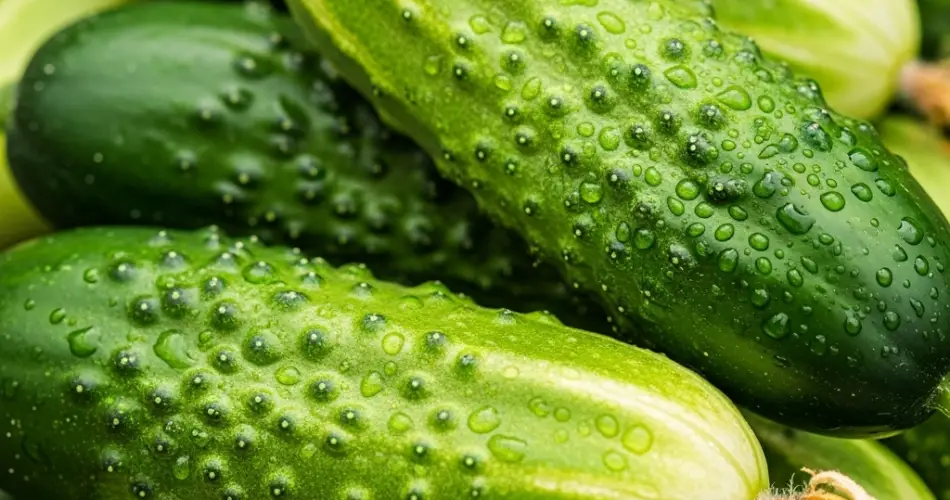Cucumbers are a refreshing and versatile vegetable that’s a favorite in salads, sandwiches, and pickles. While many people think you need a sprawling garden to grow cucumbers, the truth is they thrive even in limited spaces with the right techniques. Whether you live in an apartment with a small balcony or have a compact backyard, you can grow crisp, juicy cucumbers at home without hassle.
Here’s a complete guide to growing cucumbers in small spaces and enjoying a bountiful harvest all season long.
Why Cucumbers Are Perfect for Small Gardens
Cucumbers grow quickly, produce generously, and adapt well to vertical gardening, making them ideal for container growing. By training vines upward instead of outward, you save space while also promoting better airflow and easier harvesting. Plus, homegrown cucumbers are typically crunchier, tastier, and more nutrient-rich than store-bought varieties.
Choosing the Right Cucumber Variety
When growing cucumbers in small areas, selecting compact or bush varieties is essential. These types require less space and are well-suited for pots or raised beds. Consider the following options:
-
Bush cucumbers: Compact and great for containers (e.g., ‘Bush Champion,’ ‘Spacemaster’).
-
Pickling cucumbers: Short and plump, ideal for limited areas.
-
Mini cucumbers: Quick-growing and perfect for snacking.
If you have a vertical support system like a trellis or netting, you can also grow vining types, which climb naturally and yield heavily.
What You’ll Need
-
Cucumber seeds or seedlings
-
Pots or containers (at least 12–18 inches deep)
-
Quality potting mix with good drainage
-
Organic compost or slow-release fertilizer
-
A trellis, cage, or vertical support (for vining varieties)
-
Full sun (at least 6–8 hours daily)
-
Regular water supply
Planting Cucumbers in Small Spaces
1. Prepare the Container
Choose a container that holds at least 5 gallons of soil. Ensure it has adequate drainage holes. Fill it with a mix of potting soil and compost or aged manure to provide the nutrients cucumbers need to grow strong and productive.
2. Planting Seeds or Seedlings
Sow cucumber seeds directly into the container once temperatures are consistently warm (above 60°F or 16°C). Plant 2–3 seeds per pot about 1 inch deep. After germination, thin to the strongest plant. If using seedlings, transplant them gently to avoid damaging the roots.
Place containers in a sunny spot such as a balcony, terrace, or windowsill with strong light exposure.
3. Provide Vertical Support
To make the most of your small space, install a trellis, tomato cage, or vertical netting. As the vines grow, gently guide and tie them to the support. This not only saves space but keeps the fruit clean and reduces the risk of disease by improving airflow.
Caring for Your Cucumber Plants
Watering
Cucumbers are thirsty plants. Keep the soil consistently moist but not waterlogged. Deep, regular watering encourages strong root growth and prevents bitterness in the fruit. Water early in the day to reduce evaporation and fungal risk.
Feeding
Use a balanced, slow-release fertilizer or liquid feed every 2–3 weeks. Cucumbers are heavy feeders, especially when grown in containers, so replenishing nutrients is key to healthy growth and high yields.
Mulching
Applying a layer of organic mulch, such as straw or shredded leaves, helps retain moisture, keep roots cool, and suppress weeds.
Managing Pests and Diseases
Even in small spaces, cucumbers can encounter pests like:
-
Aphids: Spray with water or neem oil to control them.
-
Cucumber beetles: Handpick or use insect barriers.
-
Powdery mildew: Ensure good air circulation and avoid overhead watering.
To reduce disease risk, don’t overcrowd plants and remove any yellowing leaves or diseased material promptly.
Harvesting Crisp Cucumbers
Cucumbers grow quickly—check them daily once fruits start to appear. Harvest when they are firm, bright green, and reach the desired size for the variety you’re growing. Don’t let them become oversized, as they may turn bitter and reduce overall plant productivity.
Use scissors or garden shears to cut the fruit cleanly from the vine, avoiding damage to the plant.
Growing Tips for Maximum Yield
-
Pick cucumbers frequently to encourage more production.
-
Use self-watering containers to maintain consistent moisture levels.
-
Pinch off early flowers if the plant is still small to allow stronger root development.
-
Companion plant with herbs like dill or basil to deter pests and enhance flavor.
Final Thoughts
Growing cucumbers in small spaces is not only doable—it’s highly rewarding. With the right setup and a bit of care, you can enjoy a steady supply of crisp, juicy cucumbers throughout the growing season, even if you’re working with just a tiny balcony or patio.
By selecting the right varieties, using vertical supports, and maintaining healthy watering and feeding habits, you can maximize your harvest in minimal space. Whether you’re snacking on them fresh, adding them to salads, or making homemade pickles, your container-grown cucumbers will taste all the better knowing they came from your own home garden.



